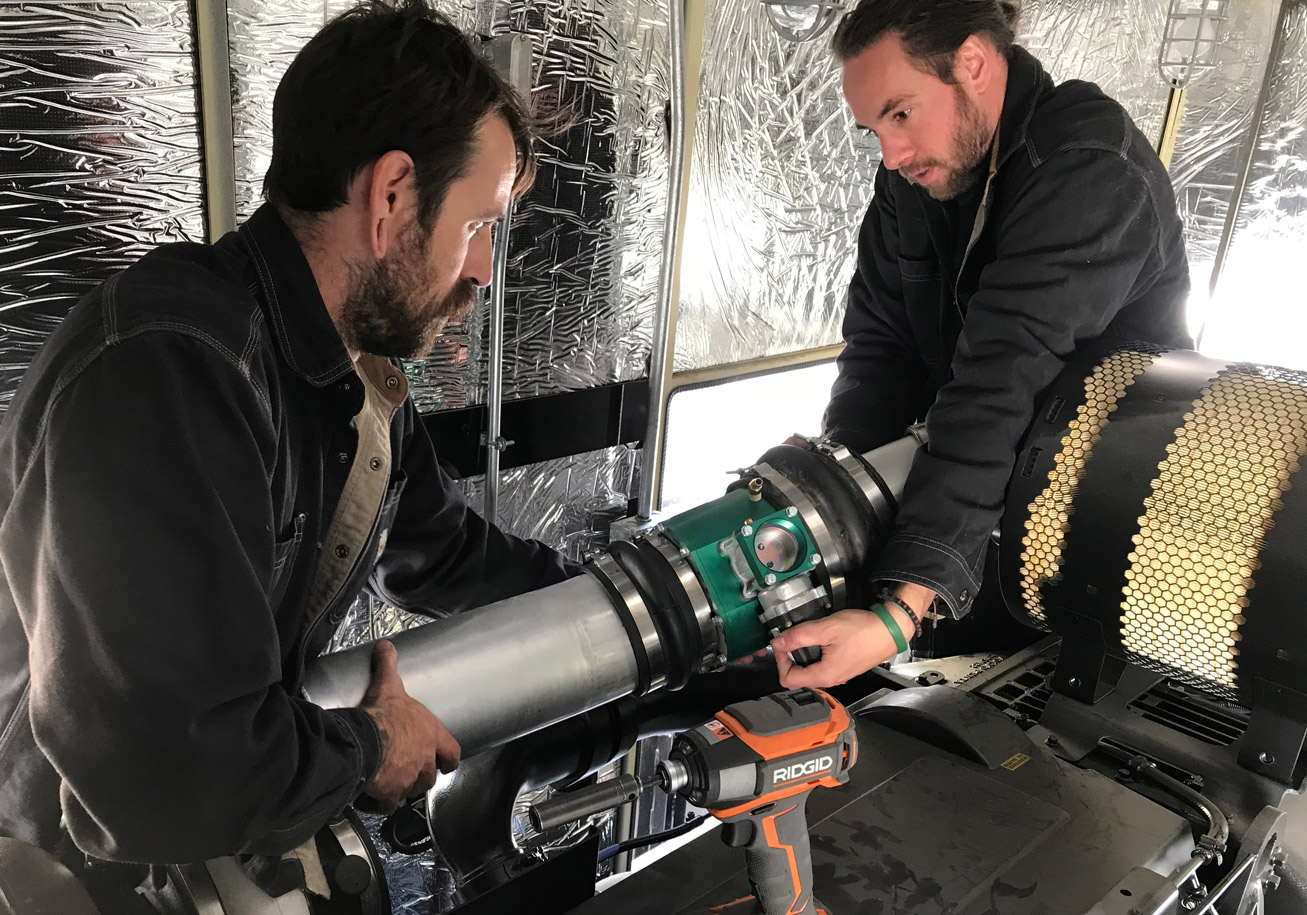Bi Fuel Mixer : Diesel – Natural Gas Mixer Valve
Bi-fuel mixers are a component in the conversion kit used to add a secondary fuel source to a diesel engine. The entire conversion kit includes a gas train, air-gas mixer, fuel control valve and control panel. The mixer is installed between the air intake and turbocharger and is connected to the gas train via the fuel control valve. The gas train feeds the air-gas mixer(s) via an infinitely adjustable throttle valve (butterfly-style) giving better control over the system than anything else on the market. OptiBlend® uses the fumigation method and Venturi-style mixers to introduce natural gas into the intake air of a diesel engine, ensuring natural gas is only ever drawn into the engine and is never forced in under pressure. This design is inherently safer because it cannot result in over-fueling the engine.

The OptiBlend® bi-fuel gas train can be connected to gas sources such as liquefied or compressed natural gas, wellhead gas, methane, low/high BTU methane, hydrogen, propane, and bio-methane. A gas train assembly includes a filter, manual ball valve, lock-off solenoid and zero pressure regulator. The supply gas pressure must be in the 3–5 psi range, and a primary pressure regulator may be required to lower the supply pressure if it is over 5 psi. The filter prevents particulate contaminants that may be present in the supply gas stream from entering the gas train and engine. The gas lock-off solenoid is controlled by the Programmable Logic Controller (PLC). The last component in the train is the zero pressure regulator, which detects fluctuations in engine vacuum through the mixer to maintain atmospheric pressure and prevent over-fueling.

The OptiBlend® air-gas mixer is sized specific to your engine and application by our team of engineers. Proper system design of the dual fuel conversion kit ensures site installation, start-up, and tuning phases go smoothly.
Contact Us
OptiBlend® in Social Media
Good news…you don’t have to go to the Netherlands to access a #dualfuel system…
Did you know that Optiblend can be used
Optiblend was developed using pipeline natural gas and syngas. It has also been used with propane, LNG, and biogas.
Dual Fuel Generator Videos
Dual Fuel Generator Articles
Bi Fuel Generator Extended Run Time and Displacement
Ready for Any Industry.
Learn why OptiBlend® is the answer to lower fuel costs, improve emissions, and increase runtime in any industry.

